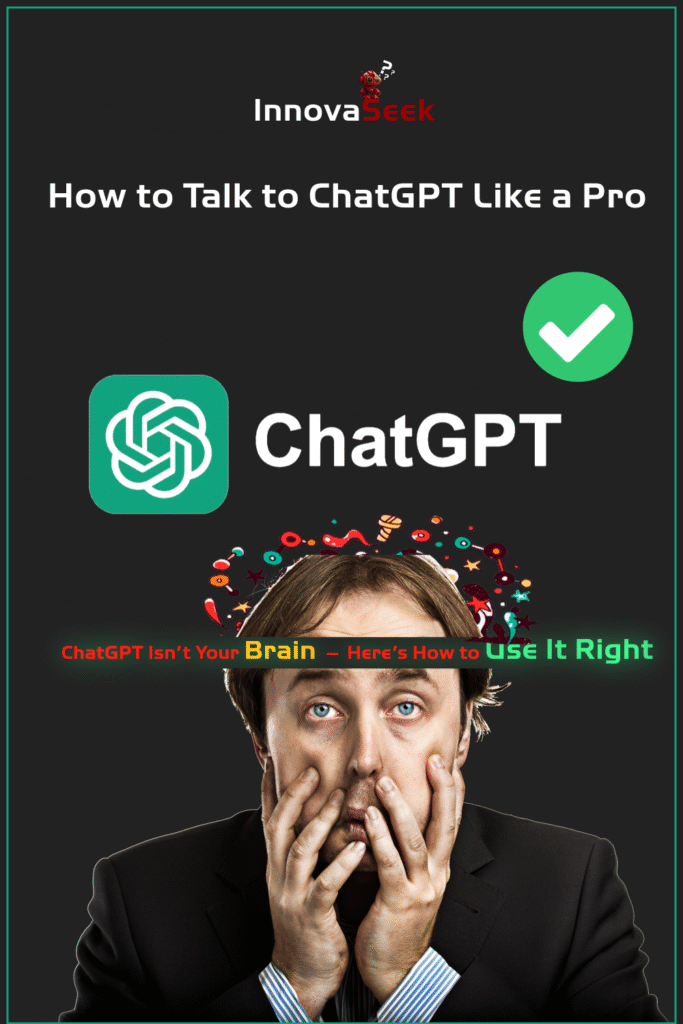ChatGPT Isn’t Your Brain — Here’s How to Use It Right
Certainly! Here’s a detailed, polished full article based on your chosen title “ChatGPT Isn’t Your Brain — Here’s How to Use It Right”, including an expanded Damages section to cover risks and how to avoid them.
In the age of artificial intelligence, tools like ChatGPT have become household names. From drafting emails to brainstorming ideas, this AI assistant has made complex tasks easier and faster. Yet, there’s a crucial truth that’s often overlooked: ChatGPT isn’t your brain. It’s a tool designed to assist, not replace your creativity or critical thinking.
If you want to harness ChatGPT’s power without losing your originality, understanding how to interact with it effectively is key. Here’s a deep dive into how to use ChatGPT the right way—and why it matters.
1. Start with Your Idea — ChatGPT Helps You Develop It
The foundation of originality is having your own idea or perspective. ChatGPT works best when you come with something to build on. Instead of asking, “Write an article about climate change,” start with what you think or want to explore. For example:
“I want to write about how climate change affects urban life. Can you help me organize my thoughts and suggest supporting arguments?”
This approach puts your creativity in the driver’s seat. ChatGPT then becomes a co-pilot that helps structure, clarify, and enhance your ideas.
2. Use ChatGPT as a Partner, Not a Content Factory
One common mistake is to treat ChatGPT like a content generator that does all the work for you. This can lead to generic or uninspired content that lacks your voice. Instead, think of ChatGPT as a collaborative partner that:
- Suggests new angles or ideas
- Helps you rephrase or clarify complex sentences
- Assists with outlining or formatting
You’re still the author. Your insights, experience, and style give your work life.
3. Question, Customize, and Critique Every Response
ChatGPT creates responses based on patterns from a vast amount of text data, but it doesn’t truly “understand” context or nuance like a human does. This means:
- It may repeat clichés or common opinions.
- It can miss your personal tone or intent.
- Sometimes, it might provide inaccurate or outdated information.
Your job is to engage actively. Ask follow-up questions, push for clarity, and always tweak the AI’s suggestions to fit your unique voice and purpose.
4. Bring Your Experience and Personality to the Table
Originality shines brightest when you combine your personal experiences with ChatGPT’s ability to organize and generate text. For example, draft a paragraph about your own experience with a topic, then ask ChatGPT:
“How can I make this paragraph more engaging while keeping my personal story?”
This way, the AI becomes a tool to amplify your individuality, not erase it.
5. Avoid Copy-Pasting Without Thought
It’s tempting to use ChatGPT’s output as-is, especially when you’re short on time. But copying verbatim can make your work feel robotic and risk plagiarism issues. Always:
- Rewrite and add new insights
- Fact-check any claims or data
- Inject your own style and perspective
This ensures your content stays fresh, trustworthy, and uniquely yours.
The Damages of Misusing
While offers amazing benefits, misusing it can lead to several pitfalls:
Loss of Originality
If you depend on AI-generated ideas or text without adding your touch, your work becomes generic and indistinguishable. Over time, this dilutes your unique voice and creativity.
Overdependence
Constantly outsourcing your thinking to ChatGPT can weaken your problem-solving and critical thinking skills. Your confidence in generating ideas independently may suffer.
Ethical and Accuracy Risks
can produce plausible-sounding but incorrect or biased information. Relying on it blindly can cause you to spread misinformation or make errors.
Plagiarism Concerns
Using content without modification might violate originality standards, especially in academic or professional settings, leading to potential ethical issues.
Reduced Learning and Growth
Taking shortcuts by letting AI do the work deprives you of the valuable learning process that comes from wrestling with challenges and refining your thoughts.
How to Avoid These Damages
- Be the originator: Always start with your own ideas or questions.
- Fact-check: Verify any data or claims generated by ChatGPT.
- Customize and add value: Rewrite and personalize AI output.
- Use it as a tool, not a crutch: Let ChatGPT assist but don’t let it do all the thinking.
- Reflect and engage: Question responses, seek clarity, and be actively involved in the creative process.
In Conclusion
ChatGPT is a powerful assistant that can accelerate your creativity and productivity—if used wisely. The key is to remember that you are the thinker, creator, and originator. ChatGPT is a brush in your hand, not the artist itself.
When you combine your unique mind with AI’s strengths, you unlock a collaboration that is greater than the sum of its parts. Use ChatGPT to amplify your voice, not replace it. That’s how you stay original in the AI age. /ChatGPT

ChatGPT Isn’t Your Brain — Here’s How to Use It Right




thanks ♥
Welcome😁